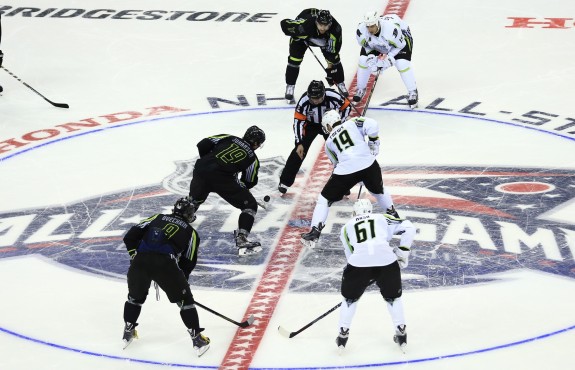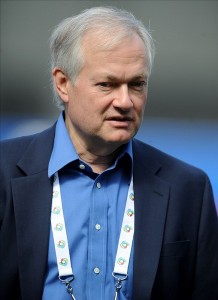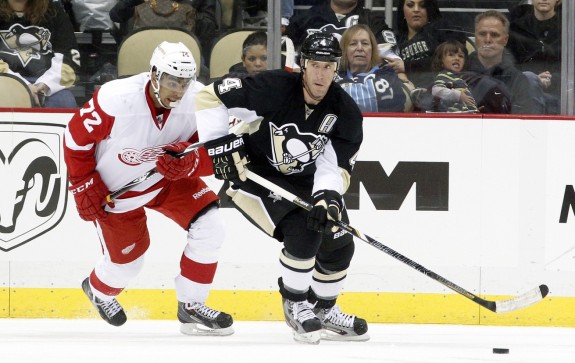
 Mike Colligan
The Hockey Writers
Mike Colligan
The Hockey Writers
33
Reads
0
Comments
NHL Escrow: A Tricky Dynamic
The NHL’s salary cap is set each season based on prior year revenues.
The fall of the Canadian Dollar has led to concerns that the 2015-16 salary cap will be lower than originally expected, but one element that’s gone relatively ignored is player escrow.
NHLNumbers.com had a good primer last week on how escrow works. If you’re new to the concept, it’s probably worth a read to understand the rest of this discussion:
The CBA provides that exactly 50% of hockey related revenue must be paid to players. If the total amount of salary slated to be paid to players in any season ends up being more than 50% of revenue earned that year, then players are required to forfeit an appropriate portion of their salary so that the 50% mark is hit.
This forfeiture is standard practice when the salary cap is set “too high” such that, when the numbers are crunched at the end of the season, the accountants conclude that teams had “overspent”. And this is what has happened almost every season since the salary cap started a decade ago.
To avoid the possibility of sending full-salary cheques to players only to then require players to return some of that money after the season, the CBA includes an escrow concept, whereby a portion of all player salary is retained in an escrow fund. After the season, the accountants determine how much of the escrow fund should be paid to the players and how much should be returned to the owners.
In short, not only will next year’s salary cap be lower if revenues fall short in 2014-15, but players won’t receive as much as they were originally expecting in their paychecks this season either.
The NHL Numbers piece points to an article by Larry Brooks at the NY Post that states players lost 12 percent of their salaries last year. Despite setting the escrow withholding at 14 percent in the first half of this season, it’s now been bumped to 16 percent to account for a potential revenue shortfall.
It sets up for an interesting NHLPA discussion in June as well.
Elliotte Friedman touched on the subject in his 30 Thoughts column last week:
At all-star weekend, commissioner Gary Bettman provided a couple of [salary cap] estimates in the $72-million range, provided the Canadian dollar stays around 80 cents.
Bettman’s predictions also depend on the players voting to use their “escalator,” which they have done every time they’ve been eligible to do so, with one exception. (The escalator allows a five per cent raise to the ceiling.) Trouble is, teams are wondering if this summer will be the second time the NHLPA votes against doing so.
The escalator used to be a no-brainer decision, but as players grow weary of losing upwards of 16 percent of their paychecks, they might decide to put the brakes on a rising cap to help escrow withholdings get back in line.
It won’t be a universally agreed-upon decision though.
Friedman relayed an old story of two players who argued over how to vote on the annual five percent escalator option:
There is a legendary story about two players who got into an argument during one team’s escrow vote several years ago. As the tale goes, one star, who had already signed a long-term contract, said his teammates should vote against raising the ceiling this time. Another star, heading into free agency, exploded at him, saying, “Oh, so the maximum should be available when it benefits you but not me?”
You might be asking yourself (1) why the NHL and NHLPA agreed to a system where the players end up losing such a significant portion of their salary and (2) what’s causing it.
First, let’s review the dynamics we’ve discussed so far:
- Prior year revenues drive next year’s salary cap (plus a potential extra five percent from the escalator).
- That salary cap number determines how much money teams have available for new contracts.
- Supply and demand sets the market for free agent signings within that cap structure.
Prior to the last lockout, I wrote about one source of potential tension between the players on this issue: front-loaded contracts.
Think back to the era of massive front-loaded deals that ultimately ended with the Ilya Kovalchuk contract rejection (and later amendment to the CBA).
Other contracts from that era are still in place. That means that while Ryan Suter and Zach Parise carry a combined $15 million cap hit on the Minnesota Wild’s books, they’re actually getting paid a combined salary of $22 million.
One or two of these Parise/Suter situations wouldn’t have a significant impact on the total financial picture, but a lot of these contracts were handed out back then to some of the NHL’s highest-paid players.
Most of them are still in the early front-loaded years too. As a result, teams are effectively overspending the cap system.
Simple example: The Pittsburgh Penguins are referred to as a ‘cap team’ — a phrase used by managers to mean the team operates right up against the salary cap ceiling. But that roster includes Sidney Crosby on a cap hit of $8.7M. His real salary in 2014-15 is $12 million.
If we assume all other Penguins player cap hits equal their salaries (which they roughly do), when the Penguins are operating at the current salary cap of $69 million, they’re actually spending $72.3 million.
Multiply this situation across the league’s highest-spending teams (Detroit) and you can see how things get out of whack.
I don’t think the system is broken.
The dynamic I just explained should theoretically shift the other way when Suter, Parise, and Crosby are being paid far less than their cap hits in the 2020 decade (especially now that the league has installed strict recapture penalties for early retirement on front-loaded contracts).
Tell that to Crosby’s teammate Rob Scuderi though.
At age 36, does he care that the system will self-correct itself ten years from now? All he knows is he’s losing upwards of 16 percent on the last contract of his career (that means about $640,000 this year).
He’ll never get that money back.
Scuderi will want next year’s cap to be as low as possible to prevent the owners from having flexibility to spend even more dollars. To spend what he thinks are his dollars.
The stars of the game will always dictate the decisions of the NHLPA, but this could be an interesting business of hockey story to follow over the coming months and years.
Popular Articles

















































 Blackhawks Chicago
Blackhawks Chicago Panthers Florida
Panthers Florida Penguins Pittsburgh
Penguins Pittsburgh Rangers New York
Rangers New York Avalanche Colorado
Avalanche Colorado Kings Los Angeles
Kings Los Angeles Maple Leafs Toronto
Maple Leafs Toronto Bruins Boston
Bruins Boston Capitals Washington
Capitals Washington Flames Calgary
Flames Calgary Oilers Edmonton
Oilers Edmonton Golden Knights Vegas
Golden Knights Vegas Senators Ottawa
Senators Ottawa Lightning Tampa Bay
Lightning Tampa Bay Flyers Philadelphia
Flyers Philadelphia Islanders New York
Islanders New York Sabres Buffalo
Sabres Buffalo Red Wings Detroit
Red Wings Detroit Devils New Jersey
Devils New Jersey Hurricanes Carolina
Hurricanes Carolina Blue Jackets Columbus
Blue Jackets Columbus Predators Nashville
Predators Nashville Stars Dallas
Stars Dallas Jets Winnipeg
Jets Winnipeg Wild Minnesota
Wild Minnesota Blues St. Louis
Blues St. Louis Mammoth Utah
Mammoth Utah Sharks San Jose
Sharks San Jose Canucks Vancouver
Canucks Vancouver Ducks Anaheim
Ducks Anaheim





